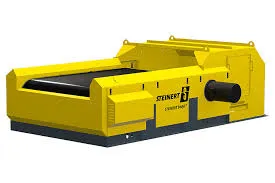

Nov . 10, 2024 14:18 Back to list
The Evolution and Importance of Swarf Shredders in Modern Manufacturing
In the fast-paced world of manufacturing, efficiency and sustainability have become paramount. One of the critical innovations that have emerged in this landscape is the swarf shredder. As industries worldwide strive to minimize waste and enhance productivity, understanding the role and evolution of swarf shredders is essential.
Swarf, often referred to as metal shavings or chips, is generated during machining processes such as cutting, grinding, and drilling. Traditionally, the disposal of swarf posed significant challenges. The accumulation of waste not only occupied precious space but also led to increased disposal costs. Furthermore, improper disposal could have detrimental environmental impacts, making it imperative for manufacturers to find effective solutions.
The introduction of swarf shredders marked a turning point in waste management within the manufacturing sector. These machines are specifically designed to reduce the size of swarf, making it more manageable for recycling and disposal. The process typically involves feeding the swarf into the shredder, where it is rapidly cut into smaller pieces by a series of rotating blades. This reduction in size facilitates easier handling and processing, ultimately leading to significant cost savings and improved efficiency.
One of the key advantages of swarf shredders is their ability to reclaim valuable materials. Metal shavings are often composed of materials that can be recycled and reused. By shredding swarf into smaller, more uniform pieces, manufacturers can enhance the quality of the recycled material, making it more appealing for resale. This not only helps in recovering costs but also promotes a circular economy, where waste is minimized, and resources are reused.
Moreover, swarf shredders can be integrated with other machinery and systems to create a streamlined processing line
. For instance, shredded swarf can be automatically fed into a briquetting machine, which compacts the material into dense briquettes that are easier to transport and sell. This integration of technology enhances productivity and reduces labor costs, allowing manufacturers to focus on their core operations while efficiently managing waste.
The development of advanced shredding technology has led to even greater benefits for manufacturers. Modern swarf shredders come equipped with features such as variable speed settings, customizable blade configurations, and automated sensors. These innovations allow operators to adjust the shredding process according to the specific type of swarf being processed, ensuring optimal results. Furthermore, contemporary machines often include dust suppression systems and noise reduction mechanisms, addressing environmental concerns and improving workplace safety.
Swarf shredding is not only an operational necessity but also plays a vital role in promoting sustainability within the manufacturing sector. As industries face increasing scrutiny over their environmental impact, the ability to process and recycle swarf can significantly enhance a company’s green credentials. By investing in swarf shredders, manufacturers demonstrate their commitment to sustainability, which can improve their corporate image and appeal to environmentally conscious consumers.
The importance of swarf shredders extends beyond waste management; they also contribute to workplace safety. By reducing the size of metal shavings, these machines minimize the risk of accidents associated with sharp, uneven swarf. A cleaner, more organized workspace contributes to employee safety and enhances productivity.
Looking to the future, the role of swarf shredders in manufacturing is expected to grow. With advancements in artificial intelligence and machine learning, we may see the development of more intelligent shredding systems capable of adapting in real-time to varying material characteristics. Such innovations could further improve efficiency, reduce energy consumption, and enhance recycling rates.
In conclusion, swarf shredders have become an indispensable component of modern manufacturing processes. By efficiently managing swarf waste, these machines not only help reduce disposal costs but also promote recycling and sustainability. As the manufacturing sector continues to evolve, the integration of advanced technology in swarf shredding will play a crucial role in enhancing operational efficiency and fostering a more sustainable future. Manufacturers that embrace these innovations will undoubtedly be better positioned to thrive in an increasingly competitive landscape.
Latest news
Troubleshooting Common Eddy Separator Problems
NewsJul.04,2025
The Role of Metal Recycling Plants in Circular Economy
NewsJul.04,2025
The Impact of Recycling Line Pickers on Waste Management Costs
NewsJul.04,2025
Safety Features Every Metal Shredder Should Have
NewsJul.04,2025
How Industrial Shredders Improve Waste Management Systems
NewsJul.04,2025
How Cable Granulators Contribute to Sustainable Recycling
NewsJul.04,2025